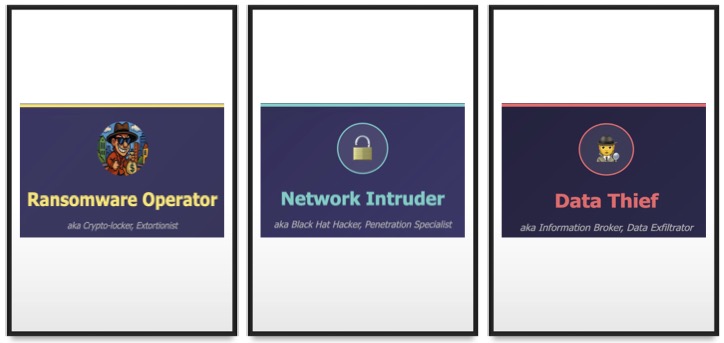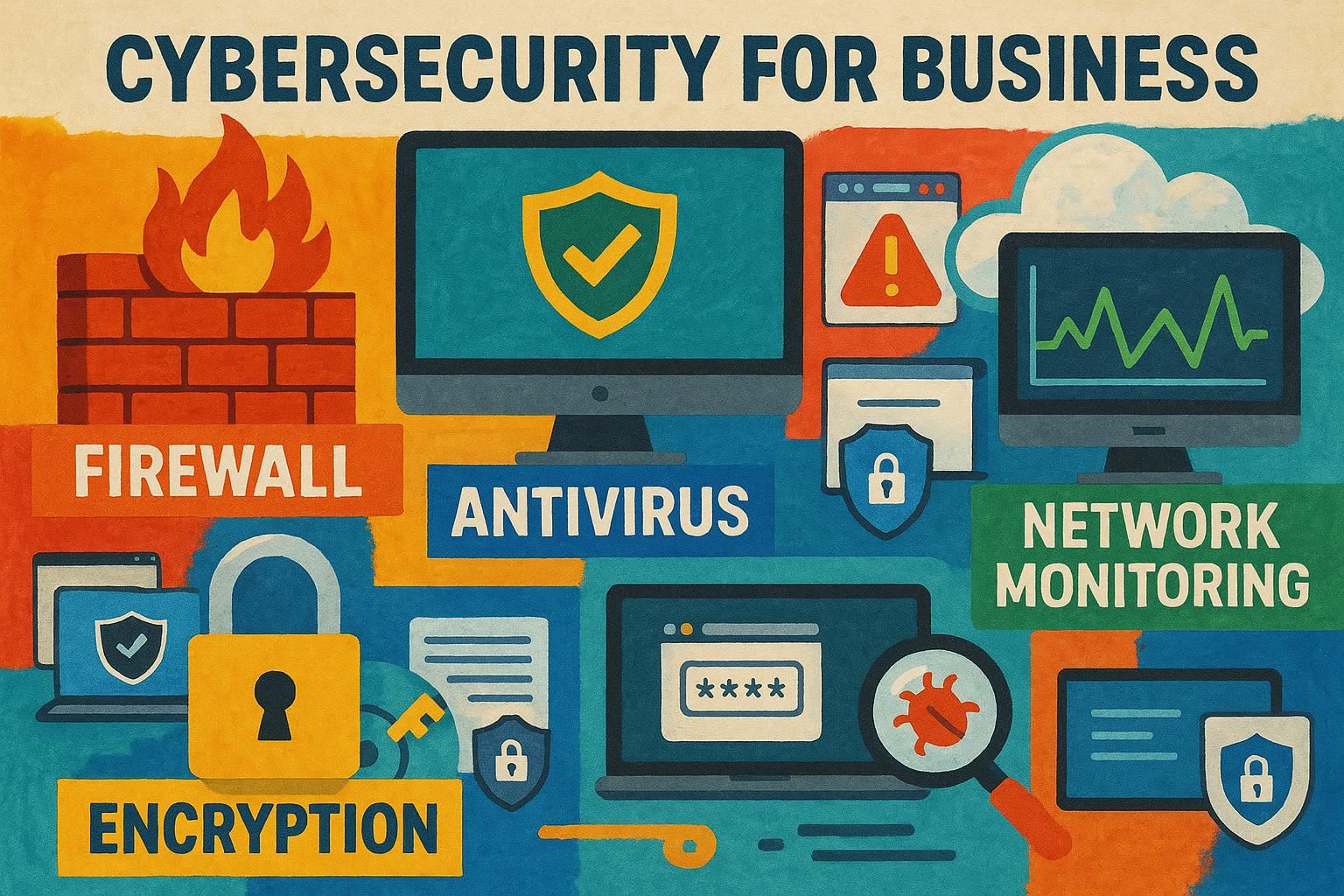The data that your company generates is crucial to running a successful business. This data has tremendous value not only to your organization but to those outside of your organization. Without proper security controls in place, your strategic data is vulnerable to malicious cyber intruders who want to steal, resell the data on the dark web and jeopardize the future of your business.
With more breeches occurring daily and AI tools that expose new vulnerabilities, Cybercriminals might be the biggest threat facing your business. Besides gaining access to your customer information, as well as employee information, they can assume control over critical applications | systems that are necessary for production lines or processing customer orders.
Any organization can be compromised. However, SMB | Midmarket businesses are particularly at risk.
Why?
Cybersecurity represents a commitment both from a financial perspective as well as the necessary processes and workflows to ensure counter measures are in place and working. The Cybersecurity sector is very complex, with its own language and subject matter experts.
Most SMB | Midmarket business leaders do not have time | expertise to evaluate cybersecurity companies who offer a suite of services. Instead, you hire the best managed service provider, buy a cyber insurance policy and then trust that the provider will implement the necessary defenses. Challenge with this approach is that MSPs do not have a Cybersecurity standard for fortifying each business against outside threats.
The tools that your managed service provider implements may not provide adequate protections against your greatest vulnerabilities.
To help, this article introduces you to the various types of bad actors so that you can consider which type represents the greatest threat to your business and then have the conversation with your managed service provider to decide on the best cybersecurity defense strategy for your business.
Types of Malicious Actors to Watch For
Today’s cybercriminals aren’t all the same. Their motives and methods differ depending on what they’re trying to steal or control. Here are the most common types of bad actors you need to stay alert for:
#1. Hackers Targeting Personal Information
Personal data remains one of the hottest commodities on the dark web. Hackers go after birth dates, addresses, banking; ACH routing, credit card, social security numbers, driver license numbers and other government IDs because these can be used for identity theft, tax fraud, and opening fraudulent accounts.
With the rise of AI-driven phishing scams, stolen personal information can now be weaponized faster and on an expansive scale, making prevention more critical than ever.
#2. Hackers Exploiting IT Infrastructure
Modern hackers don’t always want to steal data—they may want to hijack your infrastructure. By infiltrating cloud environments, servers, or storage area networks, they can secretly run their own apps or even cryptocurrency mining operations on your dime.
Signs of compromise include sudden storage shortages, unexplained network slowdowns, or unknown devices showing up in your system logs.
#3. Hackers Hunting for Confidential Business Information
Corporate espionage has gone digital. Intellectual property, trade secrets, and product roadmaps are prime targets.
If cybercriminals get early access to a new product design or patent, they can leak it to competitors, sabotage your launch, or sell it to the highest bidder. For startups and innovators, this type of breach can be devastating.
#4. Hackers Going After Account Credentials
Even with financial systems locked down, weak login credentials set by your employee are a hacker’s entry point. The human at the keyboard more often represents the greatest risk to cyber-attacks. Compromised accounts can allow attackers to impersonate executives, trick employees into sharing sensitive data, or launch business email compromise (BEC) attacks.
Stolen C-suite logins can be more damaging than a direct financial theft, leading to major fraud and reputational harm.
#5. Hackers Seeking Full Network Control
The most disruptive attacks don’t steal data—they take it hostage. Through ransomware, attackers lock down entire networks and demand payment before restoring access.
While ransom demands often hover around $30,000–$100,000, the real damage comes from downtime, lost revenue, and broken trust with clients.
In 2025, ransomware campaigns are increasingly automated and often combined with data theft, making them doubly destructive.
Hackers have evolved beyond simple data theft. Whether they’re after your employee’s information, your intellectual property, or control of your systems, modern cyberattacks are sophisticated, costly, and relentless.
Best Practices & Technologies to Counter Today’s Hackers
#1. Hackers Targeting Personal Information
Best Practices:
- Adopt Zero Trust principles (never trust, always verify).
- Enforce strong data encryption at rest and in transit.
- Minimize data collection—store only what’s necessary.
- Regularly audit access rights for employee/customer records.
Key Technologies:
- AI-driven DLP (Data Loss Prevention) tools to monitor unusual access to personal records.
- Privacy-enhancing technologies (PETs) like tokenization or differential privacy.
- Passwordless authentication (FIDO2, biometrics, hardware keys).
#2. Hackers Exploiting IT Infrastructure
Best Practices:
- Continuously monitor cloud and on-premises infrastructure for anomalies.
- Segment workloads and networks to limit lateral movement.
- Patch and update all servers and cloud services automatically.
Key Technologies:
- Cloud-native security platforms (CSPM & CWPP) for misconfiguration detection.
- AI-powered anomaly detection to flag cryptojacking or hidden workloads.
- Managed (MDR) and Extended Detection & Response (XDR) for unified threat visibility across endpoints, servers, and cloud.
#3. Hackers Hunting for Confidential Business Information
Best Practices:
- Classify and label sensitive data (IP, R&D, financials).
- Apply least-privilege access to confidential projects.
- Use insider threat detection to monitor suspicious activity.
Key Technologies:
- IRM (Information Rights Management) for controlling document sharing.
- Secure Collaboration Suites with built-in end-to-end encryption.
- AI-driven insider risk platforms that detect unusual data downloads, transfers, or leaks.
#4. Hackers Going After Account Credentials
Best Practices:
- Eliminate weak passwords—enforce passwordless logins.
- Require adaptive MFA (multi-factor authentication that adapts by risk level).
- Run regular phishing simulations and employee awareness training.
Key Technologies:
- Decentralized Identity (DID) and verifiable credentials to prevent credential reuse.
- Identity Threat Detection & Response (ITDR) tools integrated with IAM systems.
- Continuous Authentication using behavioral biometrics (typing, mouse, device patterns).
#5. Hackers Seeking Full Network Control (Ransomware)
Best Practices:
- Maintain immutable, air-gapped backups tested regularly.
- Segment critical systems and OT (operational tech) environments.
- Have a ransomware response plan and tabletop exercises.
Key Technologies:
- Ransomware-resistant storage with instant recovery features.
- Automated SOAR (Security Orchestration, Automation & Response) to isolate infected endpoints quickly.
- Deception technology (honeypots & decoys) to trap attackers before they reach critical assets.
- AI-powered threat intel feeds that update defenses in real-time.
Overall Defense Strategy:
- Zero Trust + AI-powered detection + automation.
- Security isn’t just a compilation of software tools—it’s layered defense: people, process, and technology ALL working together.
- Focus on resilience, not just prevention: assume breach and plan to recover fast.
STAY ON THE SAFE SIDE
Battling hackers may not be the most exciting part of running a business. However, neglecting cybersecurity turns your company into a target for independent | state sponsored bad actors. You may lose money, precious data, and your reputation could suffer irreparable damage.
While there isn’t a bulletproof solution, adopting the outlined tactics should be a strong starting point.
Contact Morefield today if you want to discuss your cybersecurity in greater detail and pinpoint potential risks. We can arrange a meeting and figure out ways to help your organization.
Feel free to schedule a quick call with a Morefield Cybersecurity specialist to discuss what is right for your organization or email us directly at sales@morefield.com.


